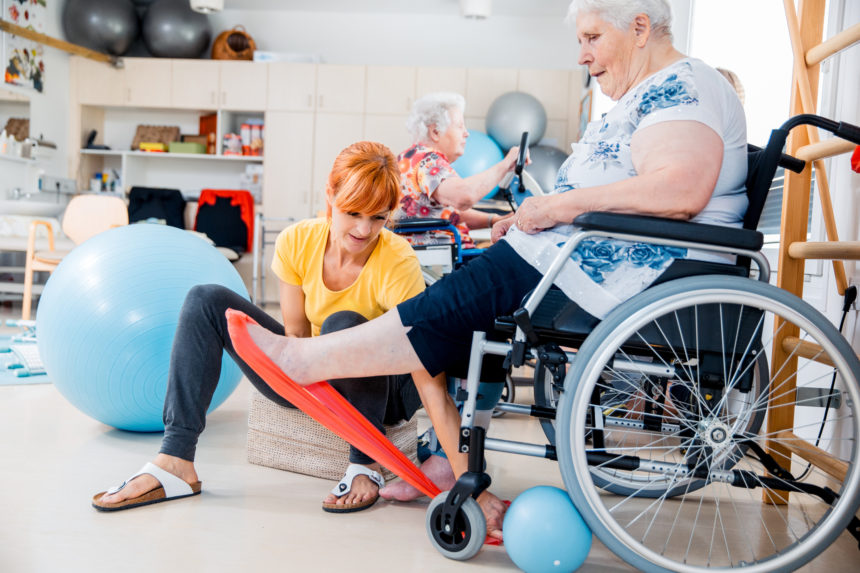
Creative chair-based exercise may lead to significant improvement in a variety of mobility, cognitive and well-being measures, according to an analysis of studies involving ambulatory and wheelchair-using nursing home residents.
Most of the investigation’s 10 qualifying studies reported significant improvements in these outcomes. Seven of the 10 analyzed physical performance and found increases in activities of daily living performance, lower body strength, upper body strength, hand grip strength, hip extension, respiratory muscle strength, arm muscle endurance, joint flexibility, and functional reach, reported Bettina Wollesen, Ph.D.

Three of the studies included only residents who were unable to walk, but these participants still gained additional physical functioning, suggesting that chair-based exercise programs are highly beneficial for these residents as well, she and her colleagues said.
“Despite mobility impairments, many residents have physical, cognitive, and psychosocial resources that should be promoted,” the authors wrote. “Focusing on specific CBE modalities, separating analyses by mobility status, and adjustment of intensity and progression are needed to provide more targeted and evidence-based guidelines,” they added.
The best type of chair-based exercise for improving different domains of physical and cognitive functioning appears to be task-specific multicomponent exercise, they concluded.
The study was published in JAMDA.




